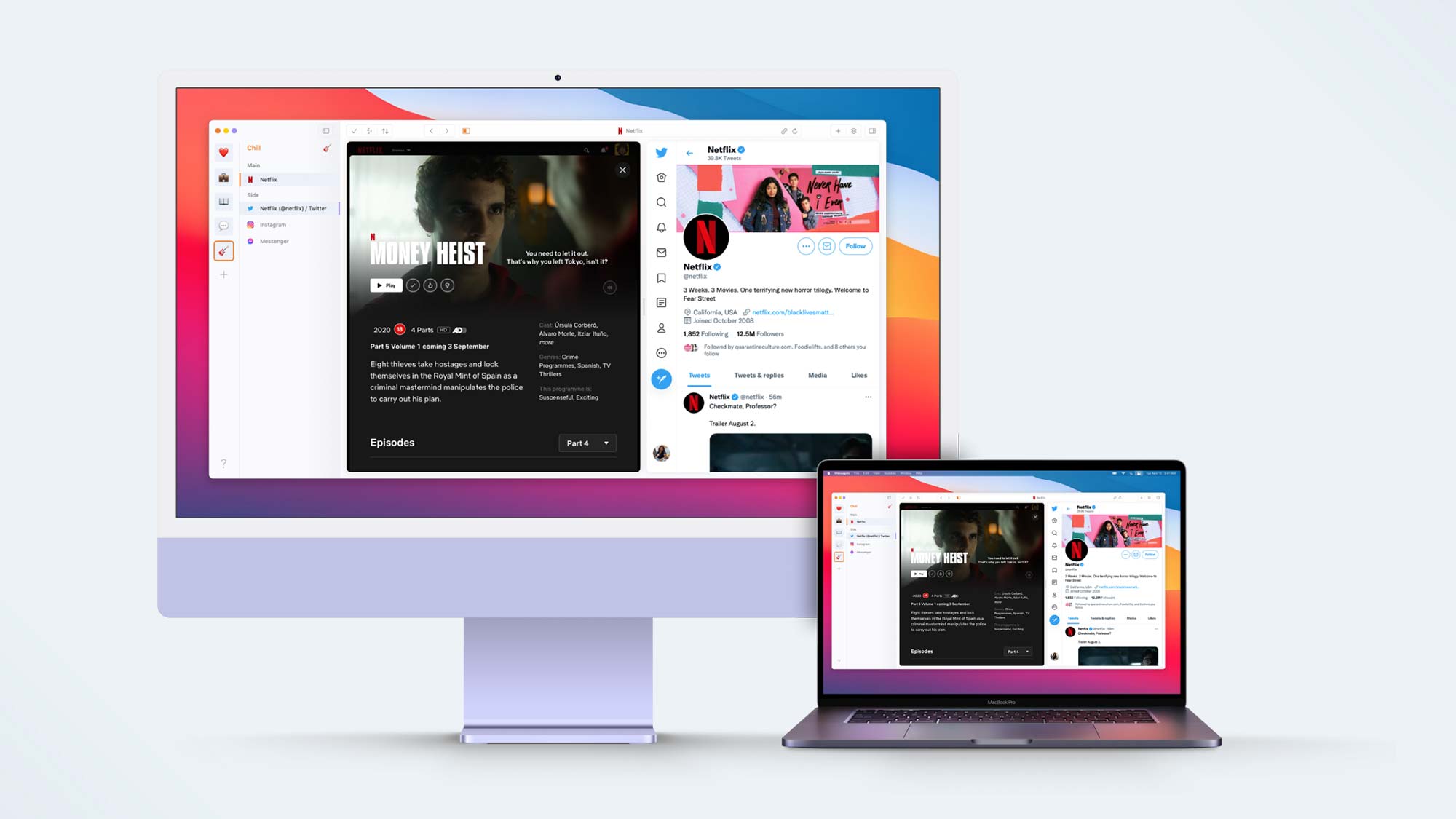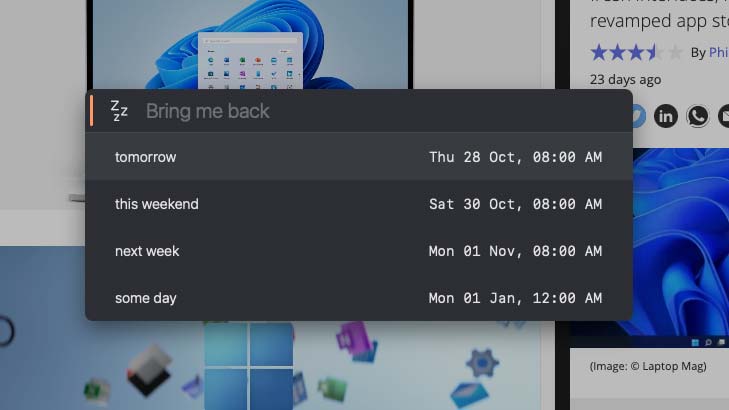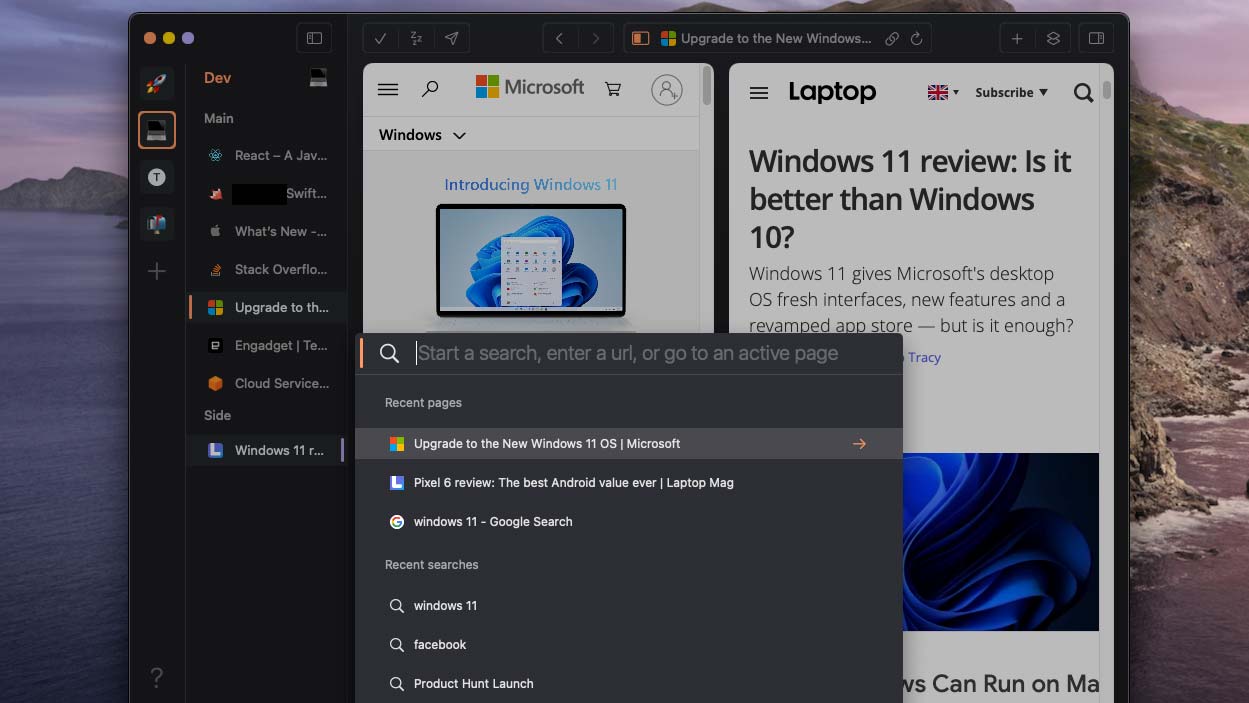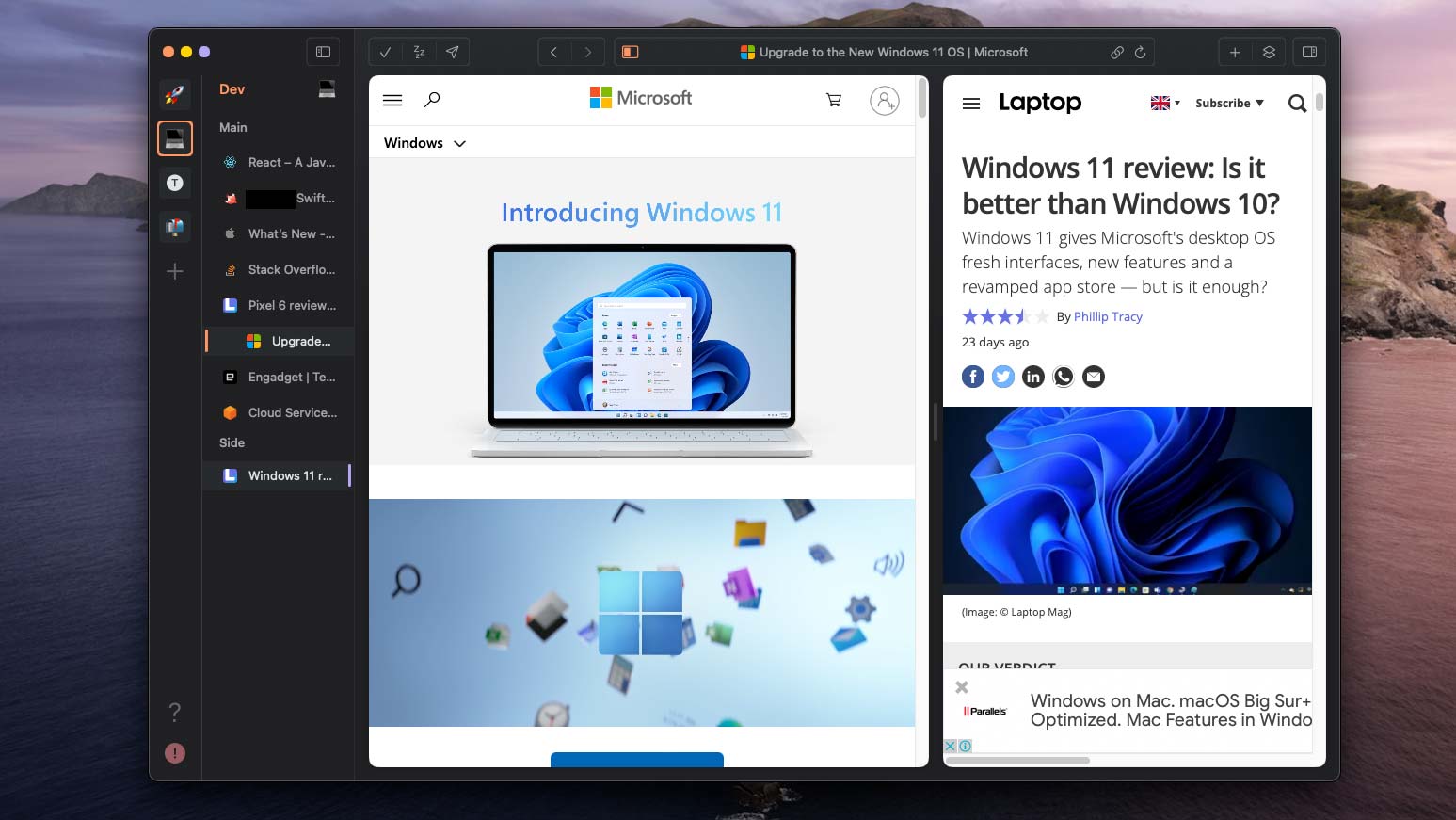This radical new browser wants to take down Chrome — but will you pay to use it?
SigmaOS tackles modern web browser problems with fresh, bold ideas. Does it work?

You probably have an idea of how a browser looks and works. There’s an address bar at the top, bookmarks under that, a stripe of tabs above, what have you. Safari, Chrome, Firefox, Brave -- the most popular options pretty much share these common attributes. These are the features we’ve come to expect from any new browser. But they’re also ideas from decades ago, and they’ve begun to show signs of age.
Our bookmarks folder always inadvertently turns into an unorganized pile where we dump all the links we plan to visit but never do. Though it seems unthinkable to live without, the limitless options to launch new tabs and windows ultimately lead us into an overwhelming mess of web pages.
Besides, what we do on the internet has transformed dramatically. We not only use the browser to access and surf information but, thanks to online apps, to also work and even play advanced games right inside a web window.
Is the browser overdue for a fundamental refresh?
SigmaOS thinks so and hopes people will even pay for it. Its bold desktop browser throws most of the traditional elements you’re familiar with out of the window. There’s no address bar, tabs, windows, or even the ability to bookmark a website. You won’t even find a cross next to each website to close it.
Billed as the first “browser for work,” SigmaOS seeks to tackle modern browser headaches, such as organization and tab overwhelm, with a radical new design. Instead of windows, it wants you to separate your various tabs by their intent into workspaces. You can, for instance, create one for work, another for a trip you’re planning, one for articles you want to read, and so on. These workspaces live in the same window on the left and work similarly to tab groups many other browsers are rolling out now.
Under a workspace, you have a vertical stack of tabs. Although, on SigmaOS, your open web pages don’t necessarily function as standard tabs. The browser wants you to treat them as a to-do item. When you’re done with why you launched a particular tab in the first place, you “mark it done.”
Sign up to receive The Snapshot, a free special dispatch from Laptop Mag, in your inbox.
SigmaOS’ London-based founder, Mahyad Ghasseni, believes the current crop of browsers is not built for working but rather simply browsing information. The problem multiple windows pose, he adds, is that it facilitates a lack of intent, and when there’s a lack of intent, you don’t give a second thought to new tabs and windows. You keep on adding more to your workflow without necessarily mulling over whether you need them. If your objective is to separate different types of tabs, windows are not the answer because they create multiple views, not multiple organized workspaces.
The idea behind SigmaOS, therefore, is to naturally force you to always sort your tabs and windows in order. And it kind of works. The absence of the “Cmd/Ctrl + T” shortcut or an address bar where I’d punch in a URL did restrict me from firing up too many tabs in one go. When I did feel the need for another window, creating and naming a new workspace brought a sense of purpose, and it continued to remind me not to open a website that doesn’t belong. After a few hours of browser use, I wasn’t fighting the dozens of tabs and windows I had opened to figure out what I was doing or where a particular page was.
At the center of SigmaOS’ redefined outlook of a browser is the Lazy Search. It’s just a slash key away, and it’s how you open a new page in a workspace, track down existing tabs, and search your history. Since SigmaOS makes using the search option almost mandatory, you get the hang of it fairly quickly and once you do that, navigating your online workflow is a breeze. When I was done testing SigmaOS, I found myself looking for a Chrome extension to replicate the Lazy Search tool.
When you sign up for SigmaOS, you’ll soon realize that accomplishing even regular tasks, like opening a new page, takes multiple steps, because of the browser’s onus on using keyboard shortcuts. SigmaOS believes shortcuts are integral to the browser experience, and therefore, while the rest of the design may seem too complicated, shortcuts are far easier to understand. Better yet, most of the primary ones need only a single key press, such as “W” for new workspace and “/” for search.
Shortcuts are the key to mastering SigmaOS, which, at first, can be overwhelming and unwieldy, but if you’re willing to give its radical ideas a shot, it’s the best way forward, and the rewards are certainly worth it.
Of course, irrespective of how flawed modern browser designs are, you will, at some point, need those traditional tools, like windows. SigmaOS agrees to an extent, and a few of its features try to compensate. You can browse two pages side-by-side in a split-screen mode. Not ready to mark a page as done just yet but want to clear it off your workflow? You can snooze it for later. SigmaOS also cleverly opens any links you click on in communications apps, such as Slack, into a separate section called “Shared With Me” so that you can visit them later and they don’t accumulate in your current workspace.

As for bookmarks, Mahyad says existing systems to save links leave people prone to being overwhelmed with links they may not actually need or “lose information like a needle in a haystack.” To that end, a future update will integrate a new kind of “intuitive” bookmarks system right into the search.
Arguably SigmaOS’ biggest shortcoming, at the moment, is that it doesn’t support any third-party extensions. The browser is also programmed on Apple’s Webkit framework instead of Google’s Chromium, which most alternate browsers are based on. Mahyad told Laptop Mag that’s because the startup’s developing the app natively for the Apple ecosystem at the moment, and it picked Webkit for its “huge performance gains, top-tier out-of-the-box security, and privacy functionalities.” That’s true, at least on the M1 Mac Mini I was testing SigmaOS on. The browser flies no matter which website you’re browsing and can go toe-to-toe with Apple’s Safari, the fastest browser for Macs.
That being said, Mahyad says the team is working on adding Chromium extension support, although how that would work and when it will arrive remains unclear.
SigmaOS isn’t as outlandish of an idea as I originally suspected and its fresh take on browsers, though not perfect, works for someone like me who relies on the web for just about everything. The only reason I won’t be making it my default browser is the lack of third-party extensions. Its subscription price is also a bit on the higher side at $10 a month, especially when extensions like Workona can replicate some of its offerings.
SigmaOS is only available for macOS, and there’s a two-week trial you can use to find out whether it’s worth the cost for you.
Shubham Agarwal is a freelance technology journalist from Ahmedabad, India. His work has previously appeared in Business Insider, Fast Company, HuffPost, and more. You can reach out to him on Twitter.



